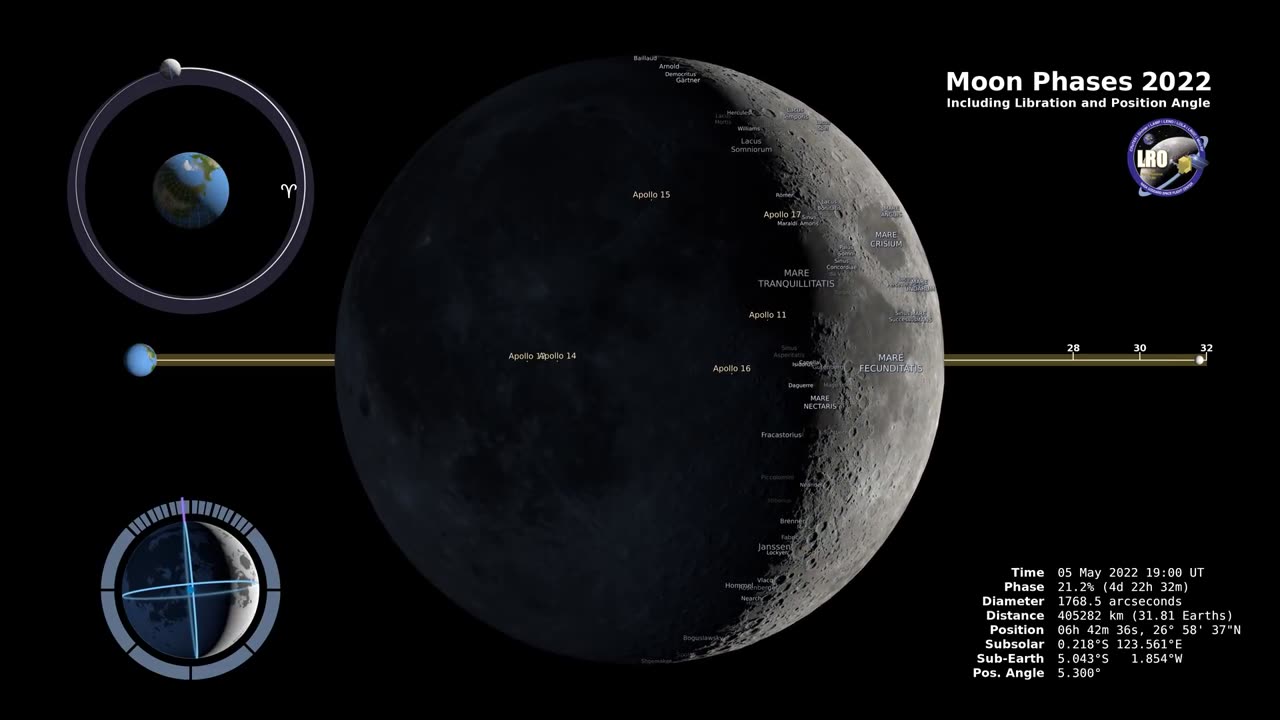Premium Only Content

moon phase 2023 by Nasa 🇺🇸🚀
The moon goes through a cycle of phases, from new to full and back again. Each phase lasts about 7 days.
New moon: The moon is not visible in the sky.
Waxing crescent: The moon appears as a thin crescent in the sky.
First quarter: The moon is half full.
Waxing gibbous: The moon appears more than half full.
Full moon: The moon is fully illuminated.
Waning gibbous: The moon appears less than half full.
Third quarter: The moon is half full, but on the opposite side of the sky from where it was at the first quarter.
Waning crescent: The moon appears as a thin crescent in the sky, but on the opposite side of the sky from where it was at the new moon.
The moon's phases are caused by the way the sun's light reflects off of the moon's surface. As the moon orbits the Earth, different parts of its surface are exposed to the sun's light.
The moon's phases can have a significant impact on the Earth's tides. When the moon is full or new, the tides are strongest. This is because the sun and moon are pulling on the Earth's water in the same direction.
The moon's phases can also affect plant growth and animal behavior. For example, some plants only bloom during certain moon phases. And some animals, such as sea turtles, only lay their eggs during a specific moon phase.
The moon's phases are a fascinating and ever-changing part of our night sky. By understanding the moon's phases, we can better appreciate the beauty and wonder of our solar system.
Here are some additional details that you can include in your video post:
The names of the different moon phases.
The length of each phase.
The causes of the moon's phases.
The impact of the moon's phases on the Earth's tides, plant growth, and animal behavior.
Interesting facts about the moon's phases.
I hope this helps!
Enter a prompt here
Bard may display inaccurate or offensive information that doesn't represent Google's views. Bard Privacy Notic
-
 LIVE
LIVE
Kim Iversen
1 hour agoThe Measles Moment – Should We Give Up on RFK Jr.? | Trump Flips the Script on Netanyahu
20,004 watching -
 1:35:24
1:35:24
vivafrei
4 hours agoSCOTUS Rules for Trump? Kind Of... Market Bloodbath That Wasn't... Canadian Tyranny Updates & MORE!
80.7K32 -
 LIVE
LIVE
Dr. Drew
5 hours agoDEI Discrimination Is Finally Illegal, So Its Promoters Are Hiding Under New Names w/ Adam Coleman & Tommy Carrigan – Ask Dr. Drew
639 watching -
 1:21:41
1:21:41
Redacted News
2 hours ago"This is war!" Trump and China on a collision course with 104% tariffs, Iran and US in direct talks
47.2K40 -
 46:39
46:39
Candace Show Podcast
1 hour agoCOMPROMISED: RFK Jr. And Hollywood Exposed | Candace Ep 173
30.6K55 -
 2:12:28
2:12:28
The Quartering
4 hours agoChina BANS US Films, Trump DOUBLES Tariff, Democrats BLAST Blue Collar Work & Shocking Gen Z Report
166K41 -
 LIVE
LIVE
LFA TV
21 hours agoLFA TV - ALL DAY LIVE STREAM 4/8/25
931 watching -
 1:24:04
1:24:04
Awaken With JP
3 hours agoIt’s Good to PANIC About Tariffs - Lies Ep 86
60.5K31 -
 1:09:15
1:09:15
The HotSeat
2 hours agoBlood Money: Funds Still Flowing for Austin Metcalf’s Killer + NYC Fights BACK!
23K5 -
 LIVE
LIVE
Revenge of the Cis
4 hours agoEpisode 1471: Sucker
1,188 watching